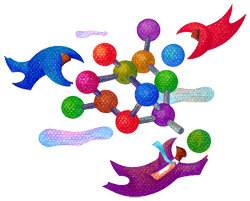Intelligent Workshops
Our workplaces today have had an eruption in technology. How we work and how we deliver our products and services has shifted. We need to maximize the ability of our employees in order to create efficiencies. The workshops listed below help to break down barriers to productivity.
Give us a call at 301-670-0051 and let us help you achieve faster results with your team.
| Word | Excel |
| Access | PowerPoint |
| Outlook | InfoPath |
| OneNote | Project |
| Publisher | WordPerfect |
| Crystal Reports | Adobe Professional |
| SharePoint | SharePoint Designer |
| Office 365/One Drive | Skype for Business |
| Visio |
SharePoint: Empowering Teamwork
 Businesses and organizations must be able to work intelligently. We have to be able to communicate rapidly, change directions when needed and manage projects and staff simultaneously. Work requires agility. It’s a tall order. To be productive and efficient, we need to invest in solutions that are tested. The applications we use must be reliable and still provide flexibility for the particular work we do.
Businesses and organizations must be able to work intelligently. We have to be able to communicate rapidly, change directions when needed and manage projects and staff simultaneously. Work requires agility. It’s a tall order. To be productive and efficient, we need to invest in solutions that are tested. The applications we use must be reliable and still provide flexibility for the particular work we do.
We spend money and time investing on our infrastructure. Our expectations are that these investments will improve performance and reliability. And we expect these systems to expand as we do – providing future needs as we grow in different ways.
Still, our investment in infrastructure depends largely on our workforce and our adoption strategies. Given the right application, and the training needed to utilize its capabilities, organizations have the power to collaborate, manage projects, and work more intelligently than ever before.
SharePoint, the web application designed by Microsoft, is probably the most highly configurable application used to reinforce the work processes throughout organizations. Here’s how SharePoint can help your organization.
Content management. Nearly everything that you can do with documents and content is easier with SharePoint. You can store files and then retrieve the information. You can search that information for certain content. You can manage these files intelligently and even track who’s accessing them. The application is designed specifically for record keeping purposes, legal issues, compliance and work processes.
Collaboration. SharePoint allows people on the same team to share documents. Process management is centralized with every member of the team sharing the same knowledge. Departments are more productive with easy file sharing.
Project Management. Projects are more easily managed. Communication within the team is easier and less cluttered when everyone can have access to documents and leave comments as needed – all within the same platform. Schedules are less likely to slip with reminders in place and hand-offs that are communicated more efficiently.
Intelligent Data. All companies and organizations have data. The problem is finding the data when you need it. How do you search through emails effectively? How do you find the latest version and feel confident that you can make changes and they will be seen and absorbed by all? SharePoint allows centralized access to enterprise information and applications.
The power of SharePoint is empowering teamwork. Every member can find, share and communicate content from any place, to any device.
You have the power. Leah M. Joppy & Associates has training capabilities that can help your organization build effective communication skills that ultimately lead to better teams and better productivity. Check out our new offerings on the following computer training. We have training in these applications at all levels, and in any version! We’re standing by. Give us a call today at 301-670-0051 or send us an email at leadership@lmja.com.
.
Can You Advance Without Becoming a Workaholic?
 Your boss spends at least one day out of the weekend in the office. Or your boss is on the job till 7 pm most nights. Does this make you think, “I have to do the same if I’m going to succeed!” Maybe not everyone thinks that way, but I sure did! One of my bosses was in the office every Saturday. And nearly every evening, he was there when I left. I started to think that this was what was expected of me. But I had a family, and kids still at home, I wasn’t sure this was really what I wanted to do.
Your boss spends at least one day out of the weekend in the office. Or your boss is on the job till 7 pm most nights. Does this make you think, “I have to do the same if I’m going to succeed!” Maybe not everyone thinks that way, but I sure did! One of my bosses was in the office every Saturday. And nearly every evening, he was there when I left. I started to think that this was what was expected of me. But I had a family, and kids still at home, I wasn’t sure this was really what I wanted to do.
I decided to mention it to my boss. I wove it into the conversation when we were talking about someone junior to me. He mentioned that he didn’t think this particular employee was dedicated to his job. So I asked him to tell me what he meant when he said “dedicated to his job.” Did he expect overtime? Working on weekends? To my surprise, and relief, he told me that he didn’t expect long hours, and certainly not weekend job responsibilities. He did those things because his family lived in another city and it was easy for him to spend long hours at work. Instead, he wanted to see passion in his employees. He said,“people who work for this company should have a real desire for their work, and demonstrate value.”
So what is expected of most employees? How do you get ahead, without dedicating your life to your organization? Here are some tips from career coaches.
Be engaged. If you are engaged, you’re part of the solution. How can you help? Your attitude shows through and more people want to be around you.
Be a person who takes action. Have you ever been in a meeting where someone keeps telling you, “it won’t work.” It drives you crazy, doesn’t it? Instead of saying it won’t work, try coming up with a solution. You take ownership. Demonstrate the creative problem solving skills you have.
Work smarter. Long hours don’t necessarily mean you are more productive. Take a minute to think through your project and see if there are overlapping areas that aren’t necessary. That’s what business process re-engineering is all about. Companies and organizations start fresh. They look at a process and determine what activity is no longer productive. Working smarter means planning your time more effectively.
Focus on relationships. Advancement rarely happens in a silo. Instead, managers what to know that the relationships you’ve built are solid. It’s important that people who work for you think highly of you. And in building relationships, you never know what gems of knowledge you’re going to uncover.
Take on new challenges. Do you hide from new projects? Instead of thinking of the work that new projects entail, think about how, if done right, that new project might just help you learn new skills – skills that will be important to the business as you move forward.
Think Big. Instead of being mired in the details, think about how you can achieve more. If you’re going through a checklist, you’re probably thinking of tasks. Look at the big picture instead, and come up with ideas that might grow the business.
When it comes right down to it, the one thing that separates successful people from others is the smart decisions they’ve made – not the hours they’ve spent on the job.
More successful employees result in a more productive organization. Does your organization need help with career development? Leah M. Joppy & Associates provides training at all levels. Give us a call at 301-670-0051 and let’s discuss your needs.
What are the top things that successful people do well?
Successful people tend to think big – looking at the entire picture instead of their particular role. Here’s what they do well.
- They stick to ethics. Whether you are dealing with fellow employees, learning the game of golf or downloading a report, stick to ethical behavior. People will appreciate your professionalism.
- They are social. The most successful people know how to draw out others. They know what questions to ask and what compliments to extend. In the end, they put people at ease. The result is that people want to interact with you.
- They invest in people. Whether it’s someone working for you, or a peer, investing in their future is as important as investing in yourself. Successful people often mentor or coach. They realize that when everyone around them is happier and more successful, they will be too.
More successful employees result in a more productive organization. Does your organization need help with career development? We provide training at all levels. Give us a call at 301-670-0051 and let’s discuss your needs.
Where will you be, this time next year?
 It’s the beginning of a fiscal year. A year from now you’d like to look back on the last 12 months and be proud of what you’ve accomplished. Is that even possible in our changing environment? Can I create a plan that not only motivates me, but motivates all the people who work for me?
It’s the beginning of a fiscal year. A year from now you’d like to look back on the last 12 months and be proud of what you’ve accomplished. Is that even possible in our changing environment? Can I create a plan that not only motivates me, but motivates all the people who work for me?
I know what you’re thinking. . .
“Maybe if I owned my own business, I could make plans!”
“If I work with blinders on, maybe I can just keep pluggin’ away and not pay attention to all the changes happening around me.”
It’s not easy. In this changing world, is there any point in trying to plan? The answer is a resounding YES! But the planning has to be smart. Consider these points.
Set Priorities. As of today, what are the priorities of your organization? The basic priorities probably won’t change much over the year, so think high level priorities and write them down.
Focus Energy. In every job, there are lots of things we do that sap us of energy, but really don’t move the organization forward. So what we are talking about here, is focusing on the items that have more to do with the overall health of the organization, rather than your particular job.
Identify Resources and Strength Operations. Identify the high level priorities and decide where your energies should be spent. Look around your organization and beyond for resources that can help. Are there groups or departments who can help you strengthen your talents and accomplish a goal? Is there an individual with particular skills who can help develop those same skills throughout your department? Should you go outside your organization? Sometimes training is best accomplished by someone from the outside. A third-party resource may not have preconceived notions on what you should learn. Instead, outside resources are generally better at listening to you and coming up with the training customized to your needs.
Establish Common Goals. We all have different work to do, but our goals can be universal. Knowing what my part is in reaching a goal helps me keep on track. And measuring the activity leading up to the goal can remind me each month of the importance of the goal.
Assess and Adjust. When the organization takes a turn, you can adjust your priorities, energy, resources and goals. Chances are, you’ll only need to adjust them slightly, making everyone feel better about the change in the organization.
Measure Accomplishments. As each quarter winds down, focus on what you have been successful in achieving. On a daily basis, we sometimes feel like we’re going in circles. But when we look at a 3 month period, it’s fulfilling to see how far we’ve come.
Strategic planning depends on a disciplined effort that produces fundamental decisions and actions that shape and guide what an organization is, who it serves, what it does, and why it does it – with a focus on the future. Measuring action items is critical. See our tip on measuring strategic plans.
For more information on how Leah M. Joppy & Associates can be your resource for training, give us a call at (301) 670-0051. Or take a look at the training opportunities on our website.
5 Tips for Measuring Strategic Success
- Include Key Performance Indicators. Nearly everything we do can be translated to numbers. While numbers never tell the entire story, they serve two purposes: 1) they help management determine results, 2) they motivate everyone to reach the goal.
- Include the HOW in your plan. How does your goal help align the organization? Including your organization and how your objectives improve the performance of the entire organization helps everyone understand the vision. Communication is key toward helping an organization achieve success.
- Set timeframes. Working on your strategic plan for 12 months is more effective than squeezing it all in during the last quarter of the year! If timetables are given for each goal, small chunks that can be accomplished on the way to the accomplished goal, the chances of reaching that goal are improved considerably.
- Make it possible. If a goal is not attainable, there will be no movement toward that goal. Breaking it down, even if the goal will end up taking several years, will improve the chances of success. Along the way, your organization will see progress, allowing your group to envision the end result.
For more information on strategic planning and overcoming organization challenges, check out our website at http://www.lmja.com/index.php, or give us a call at 301-670-0051.
Competency Modeling
 Is competency modeling part of your strategic plan? More and more organizations are using competency modeling to define successful performance in a particular work setting. Here’s an overview of competency modeling – what it means and what are the benefits of competency modeling.
Is competency modeling part of your strategic plan? More and more organizations are using competency modeling to define successful performance in a particular work setting. Here’s an overview of competency modeling – what it means and what are the benefits of competency modeling.
Competencies are individual characteristics. Competencies are often the basis for skill standards. They include the knowledge, skills, abilities, self-image, traits, mindsets, feelings, and even the ways of thinking with regard to appropriate roles. These competencies lead to a desired result – they contribute to exemplary performance that in turn, creates an impact on the outcome of the organization.
In short, a competency is the framework for defining the skill and knowledge requirements of a job.
What is a competency model? A competency model is a list of characteristics that together define successful performance in a particular work setting.
Competency models can be developed for specific jobs. They are widely used in various industries to define and assess competencies – in both hard and soft skills.
How does competency modeling differ from job analysis? The aim of competency modeling is not to summarize how a job has been performed in the past, but rather to identify the behaviors that will be needed to achieve long-term strategic goals. In this sense, competency modeling is forward looking and not rooted in the past.
What are the benefits of competency modeling. Competency models are considered valuable by various organizations to define skill and knowledge requirements of specific jobs, to assess competencies and performances, and help set business strategy. They also help reveal strengths and weaknesses – which help form the basis for training programs and learning content, both formal and informal.
In general, organization that adhere to competency modeling report:
- Greater alignment with business objectives.
- Enhanced productivity.
- Increased workforce nimbleness.
- Improved ability to identify and develop high achievers.
- Better retention of top talent. |
Experts also recommend that competency models receive sponsorship from senior leaders, are aligned to the organization’s business strategy and culture, are based on research and are tied to talent management practices.
For more information on Competency Modeling and Training, contact LMJ&A at leah@lmja.com. We can help your organization successfully employ competency modeling in the workplace. Working with you step-by-step, we will support and guide your organization through each component of the process. Give us a call at 301-670-0051.
TIP: The Elements of a Competency Model
Though the elements of a model vary, there are usually three main components.
- A title and definition. A title might consist of “Being a team player.” The definition should describe what a team player should be. Descriptions could include “Treating others with courtesy, Working to resolve conflicts, etc.”
- Descriptions of activities or behaviors. Link the description to the competency. In this case, what are the activities and behaviors of a team player? The list might include “Capitalizing on strengths of others, Motivating others to contribute, etc.”
- A diagram of the model. A diagram helps everyone visualize the competency and grasp the model. You can see various models diagrammed on this page.
For more information on Competency Modeling and Training, contact LMJ&A at leah@lmja.com. We can help your organization successfully employ competency modeling in the workplace. Working with you step-by-step, we will support and guide your organization through each component of the process. Give us a call at 301-670-0051.
Stealth Startup
 It’s a very intriguing name for Obama’s quest to recruit top talent from the likes of Google and Facebook. While this article in Fast Company is long, it’s a very interesting one, focusing on the mission of these top recruits – to “reboot” how government works.
It’s a very intriguing name for Obama’s quest to recruit top talent from the likes of Google and Facebook. While this article in Fast Company is long, it’s a very interesting one, focusing on the mission of these top recruits – to “reboot” how government works.
Most of these recruits are young professionals that were on successful career tracks with public companies. What made them take a salary cut, move from one coast to another and work for the government is brilliantly explained in this article. Without a doubt, the transfixing power of creating technology that will make life easier for millions of people, had a lot to do with the decision to take a technology job in Obama’s administration. The article explains what inspires these young men and women and helps us more fully understand their work ethics.
We highly recommend that you put some time aside at lunch, or at the end of the day to read the entire article, but here are some of the high points.
- Healthcare.gov – remember when the site just didn’t work? People were getting locked up and the site froze from too many visitors. It wasn’t the result of a dearth of engineering talent in the DC area, but rather the technique they used to build the site. Instead of one huge project, the fix-it team rolled out the site in stages – testing it, improving it and repeating the process to get the right outcome. It’s a strategy used by most public companies in order to build software that works. It’s called building “agile” software.
- Making Government Work Better – The young people recruited for these government projects aren’t just software engineers, but according to the article, “they’re data scientist, user-experience gurus, product managers and design savants.” Making the user experience better on any platform is what they strive for. “Fixing bugs” for software companies is not very inspirational. But solving problems that have plagued the government for years is both satisfying and intriguing. These young professionals are uniquely capable of handling these “planet-sized” websites, since they’ve worked on huge sites solving various problems while creating extraordinary growth for their former companies.
- Changing Minds About the Slowness of Government – According to this group of talented professionals, “Everything else is getting done faster.” The technology industry is built on the belief that processes can become twice as efficient every two years. Because that belief is so integral to their work, these professionals have a hunger for increased performance. If what we do online every day is completed far faster than before, then the same should be true for the Federal government.
- Washington, the “Go-To” Place for Technology Gurus – The folks now being lured to DC are arguably among the very best. Talent is extremely important, but so is attitude, patience, collaboration and the ability to work within the structure of the government. According to the article, candidates are screened for EQ – that is, emotional intelligence. The workload within the Federal Government is huge. Can this team create enough momentum, before Obama’s second term ends, to achieve a stable environment and re-energize government agencies?
These technology gurus believe they’ve already had an impact. They can gauge improvement on various sites – from the Immigration site to the Veterans website. Interestingly enough, the recruitment team is not expecting these young professionals to make a career out of the Federal Government. But rather to enlist them for a year or two to accomplish real change. As a result, there is now a third option open to technology gurus – a start-up, a big company and now, Washington.
Tip: Making Incremental Changes
 The healthcare.gov site successfully deployed by making incremental changes, testing the changes and making improvements. Can this process of incremental change work at your organization? Here are some thoughts that might lead to success.
The healthcare.gov site successfully deployed by making incremental changes, testing the changes and making improvements. Can this process of incremental change work at your organization? Here are some thoughts that might lead to success.
- Making incremental changes is not as disruptive and typically does not significantly threaten existing structures.
- Incremental changes are typically slower, but can move a team steadily forward. Incremental gains prove better than none at all.
- Often, the magnitude of a change will dictate how employees react. Employees will often react positively to a change that does not cause them to move too far from what they know.
- Incremental change is often determined by the gap between the current state and where you want to end up. If the gap is large, incremental changes may not be possible. But incremental changes require less change management – you’re asking your employees to make a smaller leap from what they know, to what they are comfortable with.
Change and change management can be taught. LMJA works with organizational challenges. If you need help or would like to discuss your options, give us a call at 301-670-0051, or email me at Leadership@lmja.com.



